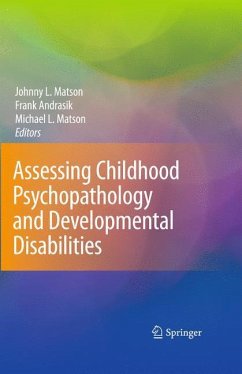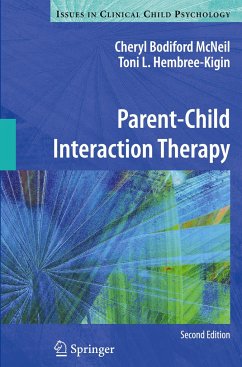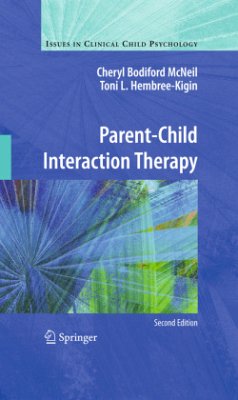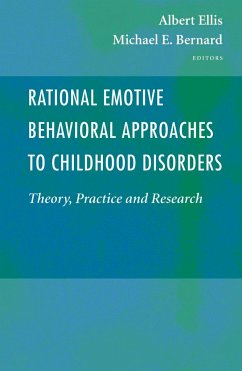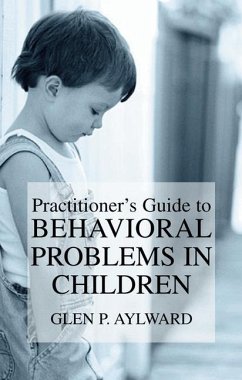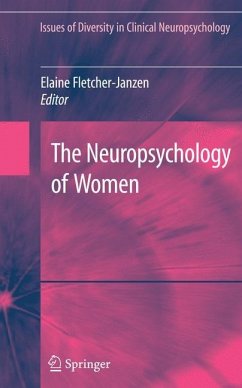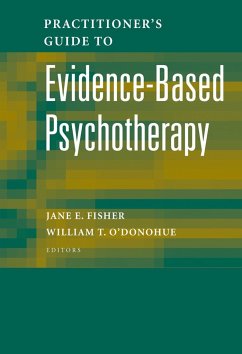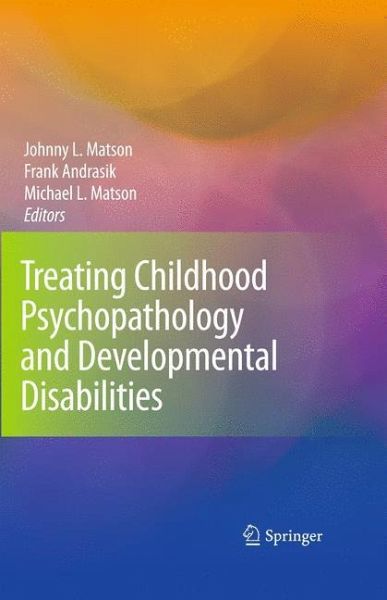
Treating Childhood Psychopathology and Developmental Disabilities
Versandkostenfrei!
Versandfertig in 6-10 Tagen
83,99 €
inkl. MwSt.

PAYBACK Punkte
42 °P sammeln!
Child psychology is a constantly expanding field, with dozens of specialized journals devoted to major disorders springing up in recent years. With so much information available - and the prospect of overload inevitable - researchers and clinicians alike need to navigate the knowledge base with as much confidence as they do the nuances of diagnosis and their young clients' complex social, emotional, and developmental worlds.Treating Childhood Psychopathology and Developmental Disabilities fills this need by summarizing and critiquing evidence-based treatment methods for pediatric patients from...
Child psychology is a constantly expanding field, with dozens of specialized journals devoted to major disorders springing up in recent years. With so much information available - and the prospect of overload inevitable - researchers and clinicians alike need to navigate the knowledge base with as much confidence as they do the nuances of diagnosis and their young clients' complex social, emotional, and developmental worlds.
Treating Childhood Psychopathology and Developmental Disabilities fills this need by summarizing and critiquing evidence-based treatment methods for pediatric patients from infancy through adolescence. After a concise history of evidence-based treatment, promising new trends, and legal/ethical issues involved in working with young people, well-known professors, practitioners, and researchers present the latest data in key areas of interest, including: (1) Cognitive-behavioral therapy and applied behavior analysis. (2) The effects of parenting in treatment outcomes. (3) Interventions for major childhood pathologies, including ADHD, PTSD, phobias, anxiety, depression, bipolar disorder, and conduct disorder. (4) Interventions for autistic spectrum disorders and self-injuring behaviors. (5) Techniques for improving communication, language, and literacy in children with developmental disabilities. (6) Treatments for feeding and eating disorders.
This comprehensive volume is an essential resource for the researcher's library and the clinician's desk as well as a dependable text for graduate and postgraduate courses in clinical child, developmental, and school psychology.
(A companion volume, Assessing Childhood Psychopathology and Developmental Disabilities, is also available.)
Treating Childhood Psychopathology and Developmental Disabilities fills this need by summarizing and critiquing evidence-based treatment methods for pediatric patients from infancy through adolescence. After a concise history of evidence-based treatment, promising new trends, and legal/ethical issues involved in working with young people, well-known professors, practitioners, and researchers present the latest data in key areas of interest, including: (1) Cognitive-behavioral therapy and applied behavior analysis. (2) The effects of parenting in treatment outcomes. (3) Interventions for major childhood pathologies, including ADHD, PTSD, phobias, anxiety, depression, bipolar disorder, and conduct disorder. (4) Interventions for autistic spectrum disorders and self-injuring behaviors. (5) Techniques for improving communication, language, and literacy in children with developmental disabilities. (6) Treatments for feeding and eating disorders.
This comprehensive volume is an essential resource for the researcher's library and the clinician's desk as well as a dependable text for graduate and postgraduate courses in clinical child, developmental, and school psychology.
(A companion volume, Assessing Childhood Psychopathology and Developmental Disabilities, is also available.)



